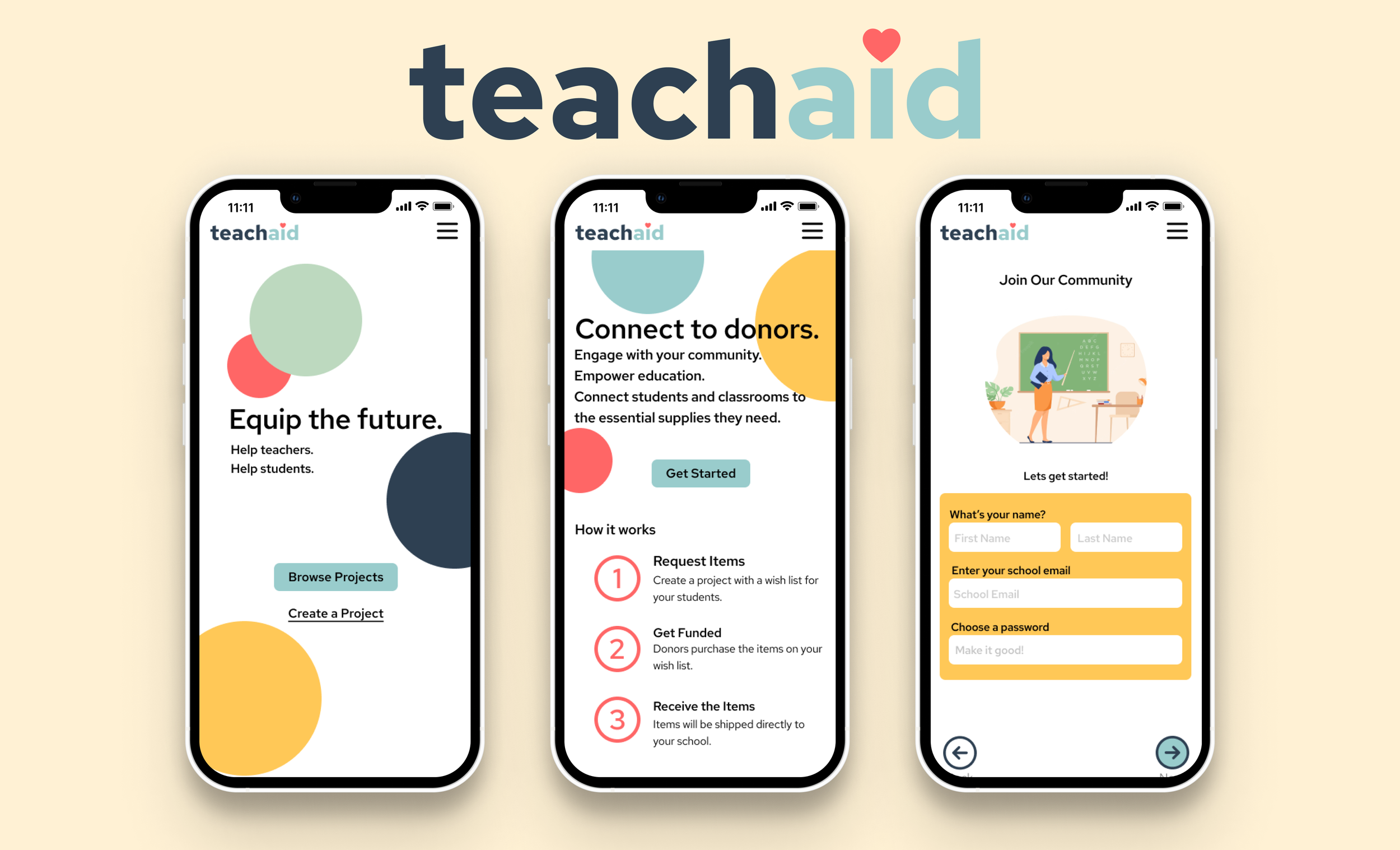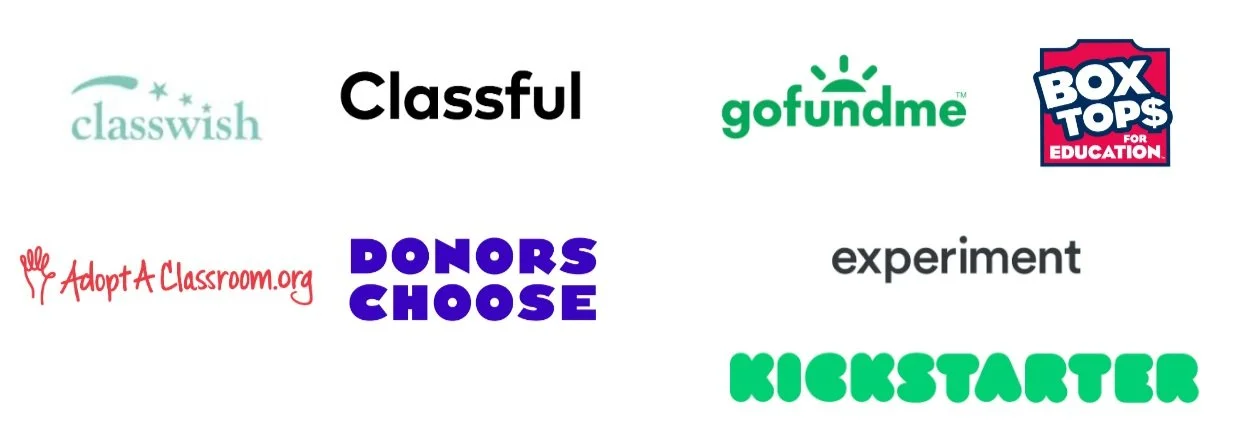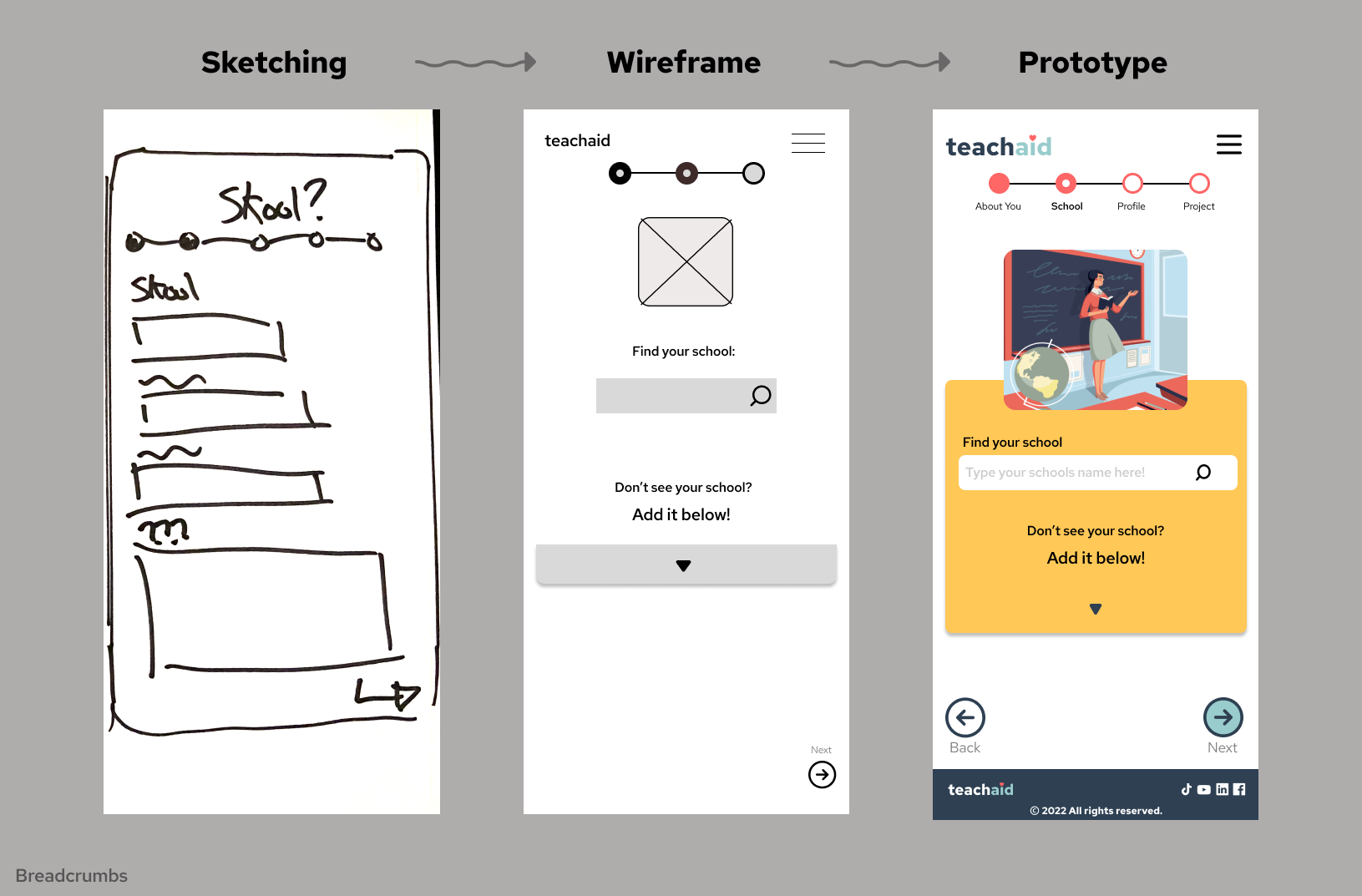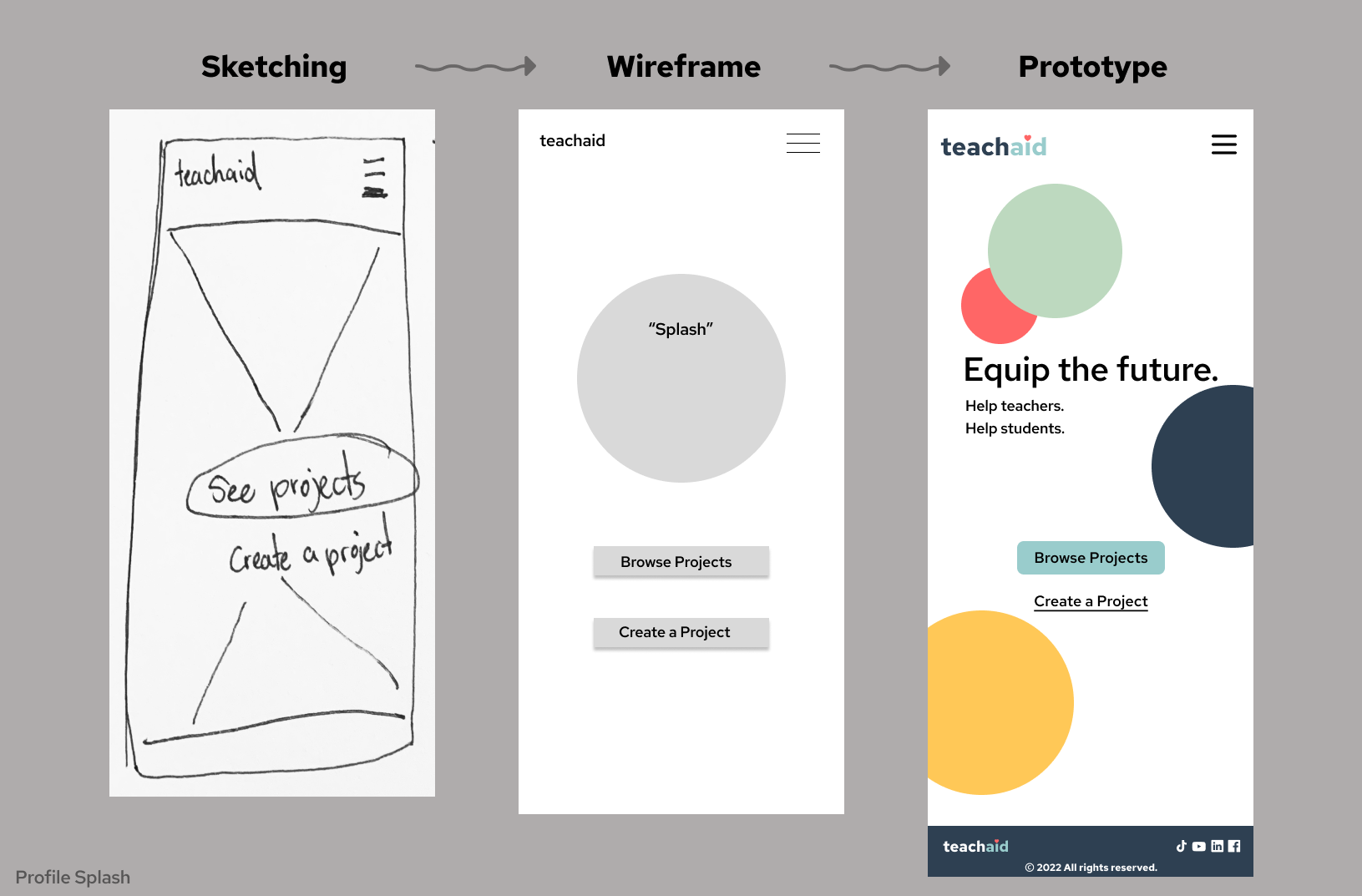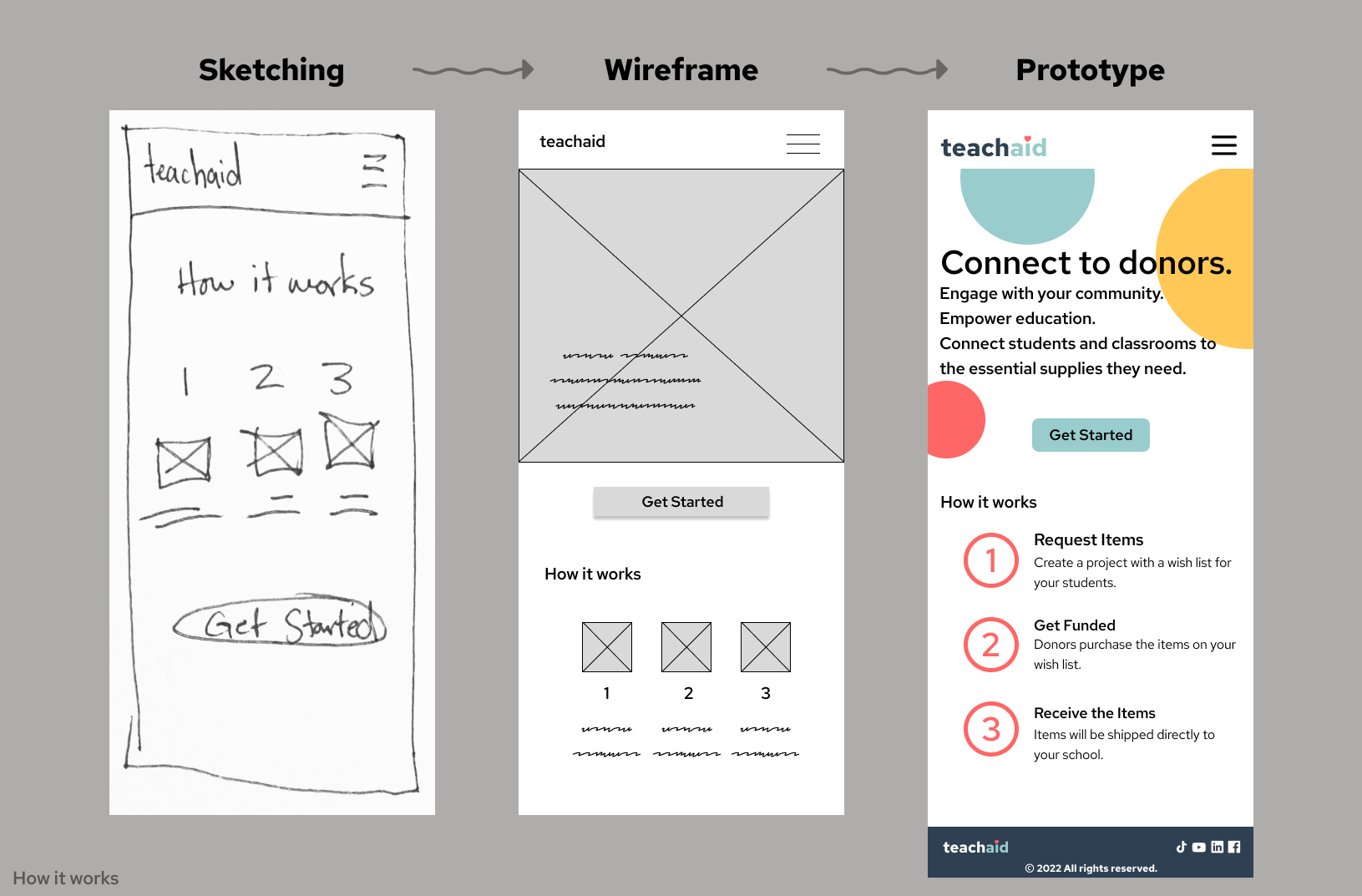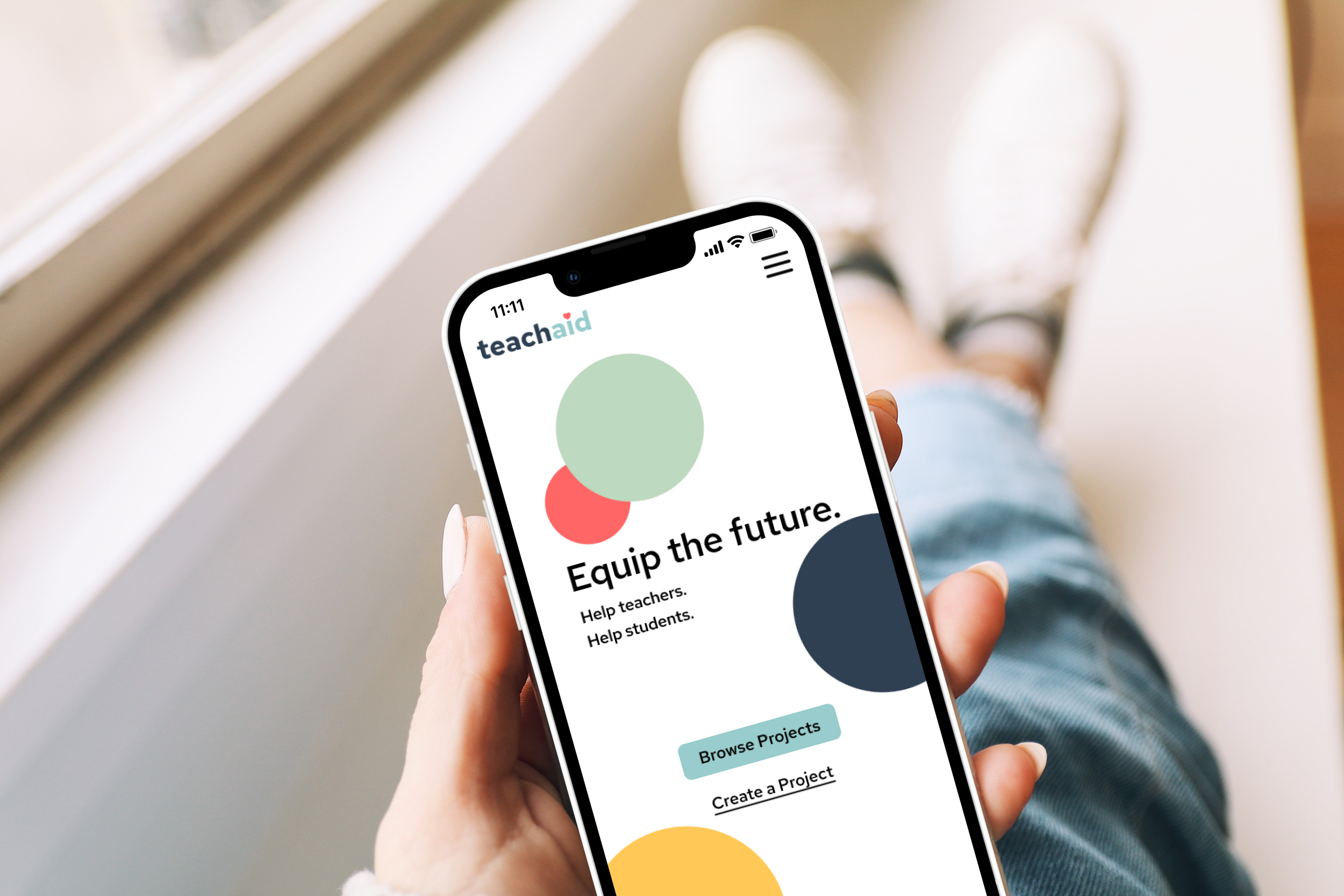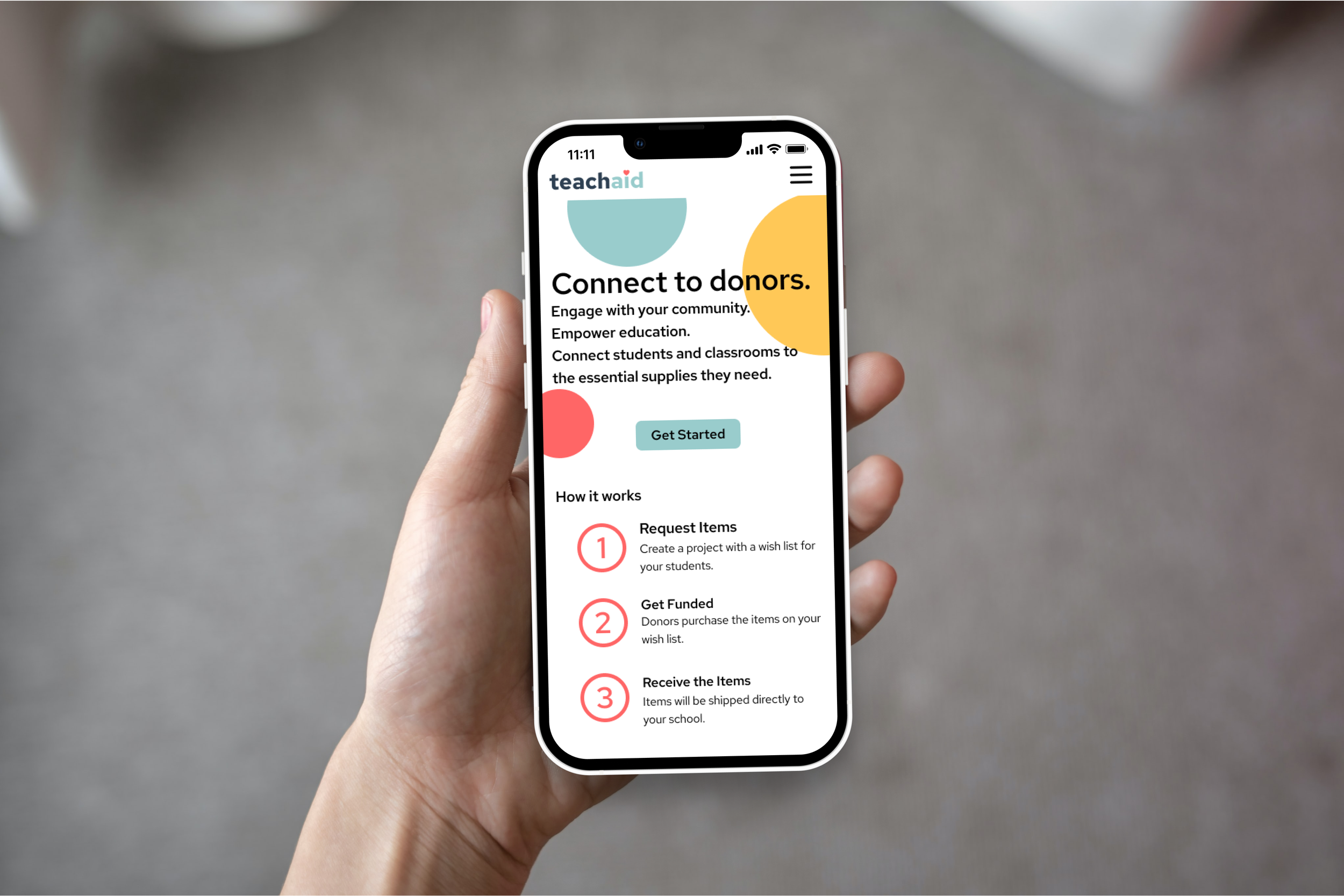teachaid
Connecting Students & Classrooms
Help Teachers. Help Kids. Equip the Future.
ROLE
Research Lead, UX Writer, UX Designer
TEAM
UX Designers - Chanteal Brayboy, Teresa Witzke, Mike Snider
Developers - Bisrat Amtataw, Jeff Martin, Jerald Young, Kian Gormley
TIMELINE
4-day General Assembly Winter Hackathon (2022)
TOOLS
Figma, Zoom, GitHub, Slack
TECH STACK
Mongo DB, Express.js, React.js, Node.js (MERN)
BRIEF
During this hackathon, I was challenged to work in a competitive environment, rapid prototype and QA a web based solution, in the theme of holiday spirit, to give back to the community.
OVERVIEW
During General Assembly's 4-day Winter Hackathon, a team of four developers and three UX designers, including myself, came together to create a mobile-first web application, aimed at connecting teachers with members of the community to raise funds and awareness for classroom supplies. Dubbed "teachaid," the app's goal is to empower educators to acquire essential supplies for at-risk students, provide users with a way to make a tangible impact in classrooms, and allow them to easily find teachers and schools in need. The project was presented to a panel of judges as a means of giving back to the community, with the ultimate goal of creating a more enriching learning environment for our youth.
MY ROLE
As part of the team, I played a key role in the development of "teachaid," a crowdfunding app that brings together teachers and community members to raise awareness and donations for classroom supplies, in an effort to create a more enriching learning environment.
Research
Why Support Teachers?
Teachers are expected to hold 30% of the responsibility of students becoming educated and socialized adults, up to 9 months out of the year. [1]
Statistically, they are also underpaid and underfunded, They do not have the means or budget to do so without reaching into their own pockets. [1]
Funding Is Fundamental
According to a recent National Bureau of Economic Research (NBER) study, state fiscal reforms have had a positive impact on student outcomes—particularly among low-income students. In fact, the study found that spending increases improved high school graduation rates among low-income students and increased their adulthood earnings by 10 percent. [2]
Well over 90 percent of teachers spend their own money on school supplies and other items their students need to succeed. [2]
Just before the pandemic, educators on average spent around $500 of their own money on classroom supplies over the course of the year. That number is expected to be considerably higher this year. [2]
Source: [2] The National Education Association (NEA)
Exploring Other Platforms
Competitive & Comparative Analysis
I found that most of these platforms had implemented standard crowdfunding features, such as; creating a campaign, setting goals, creating a profile, a way to collect donations.
We explored current platforms that have already been established to connect people to help fund projects or schools/classrooms and found that Kickstarter was the most robust and very well thought out. We took took keys aspects of their campaign set up.
Main Takeaways:
Being able to personalize as an individual, school, nonprofit, or shop.
Extensive filters - Being able to search by teacher, school, or campaign type.
Being able to make a payment/donation with alternate options.
Define
Meet Belle, our Persona
Knowing that teachers have an immense responsibility to ensure a valuable education to students, yet remain underfunded, we created Belle. She is teaching in a low income area and is dealing with an increasing number of students to provide for. Belle is spending more and more of her own money every year.
The Challenge: 90% of public school teachers in the United States spend their own, personal funds to provide essential school/classroom supplies for their students.
Problem Statement: Teachers with undersupplied classrooms need a credible way to easily seek material donations, so that they can provide the most enriching learning experience for their students.
How Might We:
Facilitate educators’ acquisition of essential supplies for at-risk students?
Provide users with a way to provide urgent, actionable support to classrooms in need?
Help users find teachers in need and provide them with support?
Design
From Sketching to the Prototype
We came up with decisions on the UI of our app with an array of colors and white. We also chose to keep the minimal aspect of our design and kept our copy informative but short. We added a collapsible hamburger menu for more detailed information if the user feels inclined to learn more.
Final Product
Presenting The Final Product
After prototyping, it was time for the UX team to hand off our designs and style guide to the Developers. They modified the app to be more responsive so that users can use teachaid on a computer or a tablet if they do not want to use their phone.
The MVP
The MVP that was developed by the team and presented on the final day of the hackathon was the result of the developers' hard work and collaboration.
Reflections and Next Steps
What did I take away from this experience?
Participating in this hackathon was an incredibly intense and rewarding experience. Given the short timeframe of just 4 days, it was a challenge to ideate, design, and build a functioning application, and then present it to a panel of judges. This was my first time working with a team of back-end and front-end developers, and the experience allowed me to deepen my understanding of how to effectively collaborate with developers and communicate design materials. Despite the tight deadline, the team worked seamlessly together, and I felt privileged to be able to learn from my colleagues and improve my workflow. Overall, this hackathon was an unforgettable experience that allowed me to grow as a designer and team player.
What are my Next Steps?
Moving forward, my next steps for this project include conducting usability testing to gather feedback and make improvements to the design for a more seamless and intuitive user experience. Additionally, I plan to explore the option of fully integrating Amazon's purchasing portal to enable users to donate goods using their own Amazon account. Lastly, optimizing the web application for multi-device support.
Thanks for reading! If you want to collaborate, talk about UX Design, or want to say hello, find me at aaron.l.yeung@gmail.com or connect via LinkedIn.

